Art World
They ‘Come in Peace’ But They’ve Been Through Hell: Huma Bhabha Brings Her Battle-Scarred Figures to the Met Rooftop
The installation takes its name from one of the classic lines of sci-fi cinema.
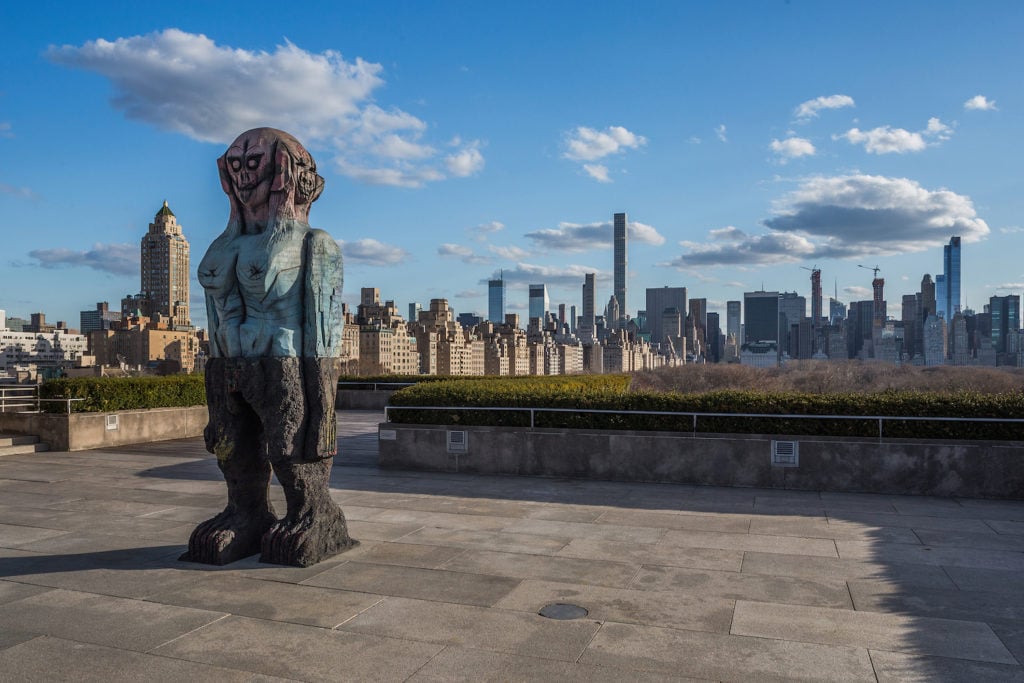
The installation takes its name from one of the classic lines of sci-fi cinema.

Sarah Cascone

The Pakistani-born artist Huma Bhabha has installed two monumental sculptures on the roof of the Metropolitan Museum of Art. The taller of the figures, an ambiguously sexed 12-foot-tall body titled We Come in Peace, suggests a benevolent, many-headed visitor from another planet. Nearby, huddled prostrate, is the 18-foot-long Benaam, the Urdu word for “unnamed,” which Bhabha has used in a previous work to memorialize those killed in the Iraq and Afghanistan wars. It is an unsettling figure, almost entirely obscured by what appears to be a large black burqa, or perhaps a garbage bag.
The installation is the museum’s latest commission for the Iris and B. Gerald Cantor Roof Garden, and it’s far more simplified than some of the past projects, which have included an entire banquet hall’s worth of dining room table sculptures by Adrián Villar Rojas in 2017.
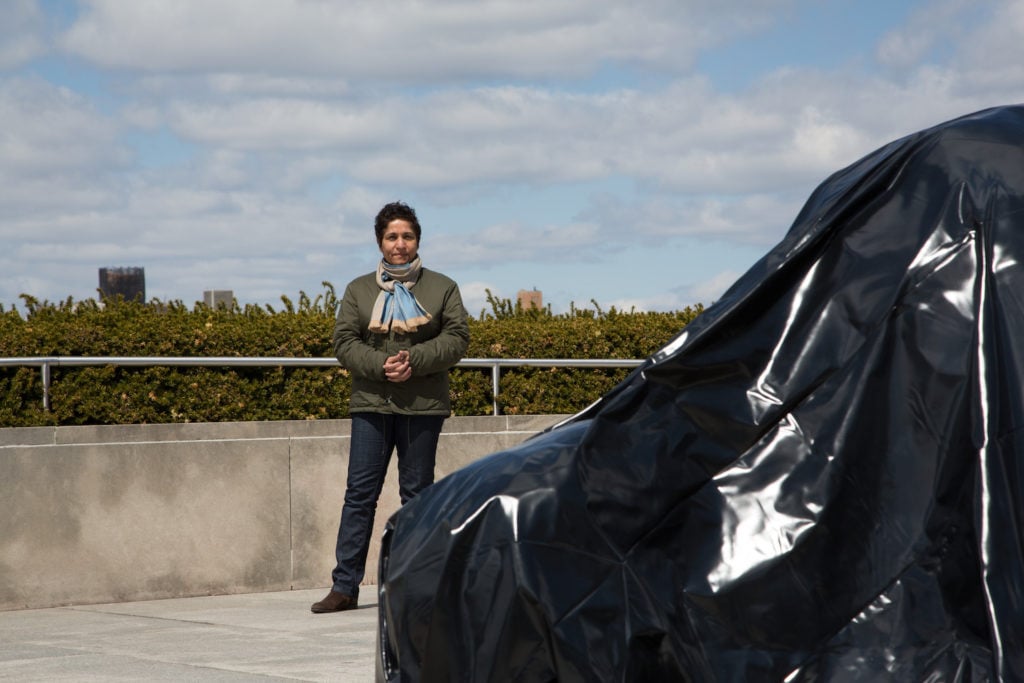
Huma Bhabha at the Met’s Roof Garden for the unveiling of “Huma Bhabha: We Come in Peace.” Photo by Eileen Travell.
Bhabha, who also has a show opening this month at New York’s Salon 94, takes the exhibition’s title from a line in the 1951 sci-fi film The Day the Earth Stood Still, in which the aliens assures mankind that “We Come in Peace.”
“It’s an anti-war narrative. It’s about a dead body… but it’s not necessarily dead, either,” said Bhabha in an interview for the exhibition catalogue. “It is a monumental cocoon with the potential for rebirth, and at the same time the giant black plastic shroud is a monument to the unnamed victims of war.”
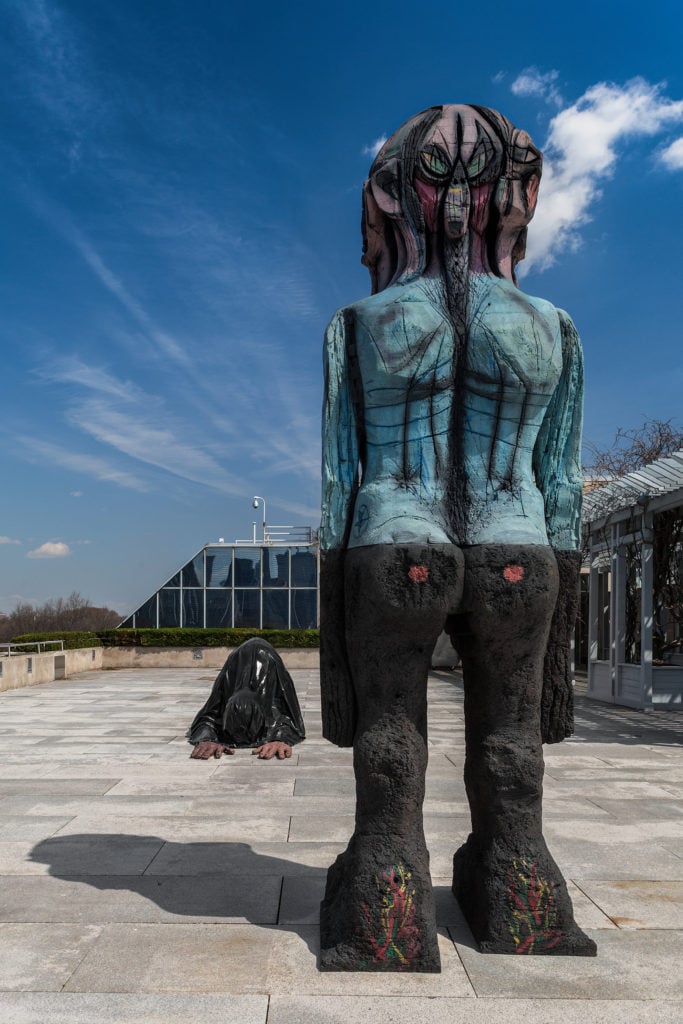
Installation view of the Met’s new Roof Garden commission, “Huma Bhabha: We Come in Peace.” ©Huma Bhabha, courtesy of the artist and Salon 94. Photo by Hyla Skopitz, courtesy of the Metropolitan Museum of Art.
“Maybe the way that the two figures on the roof connect by being summoned, coming when the other calls,” she added. “I think if the sculptures were seen separately they would inspire darker interpretations, but the combination of the two on the Met roof creates a dialogue and a narrative that implies some kind of communication from which hope can be derived.”
Both works were originally sculpted from clay, Styrofoam, and cork before being cast in bronze. “I love Styrofoam, found scraps of wood and metal and other garbage; I have used these materials in my art for a long time—maybe because I’m interested in collage and assemblage, but also because there is an element of chance in picking up these free materials that can lead to very beautiful results,” Bhabha said. But these works had to be cast in bronze to weather the long-term outdoor installation.
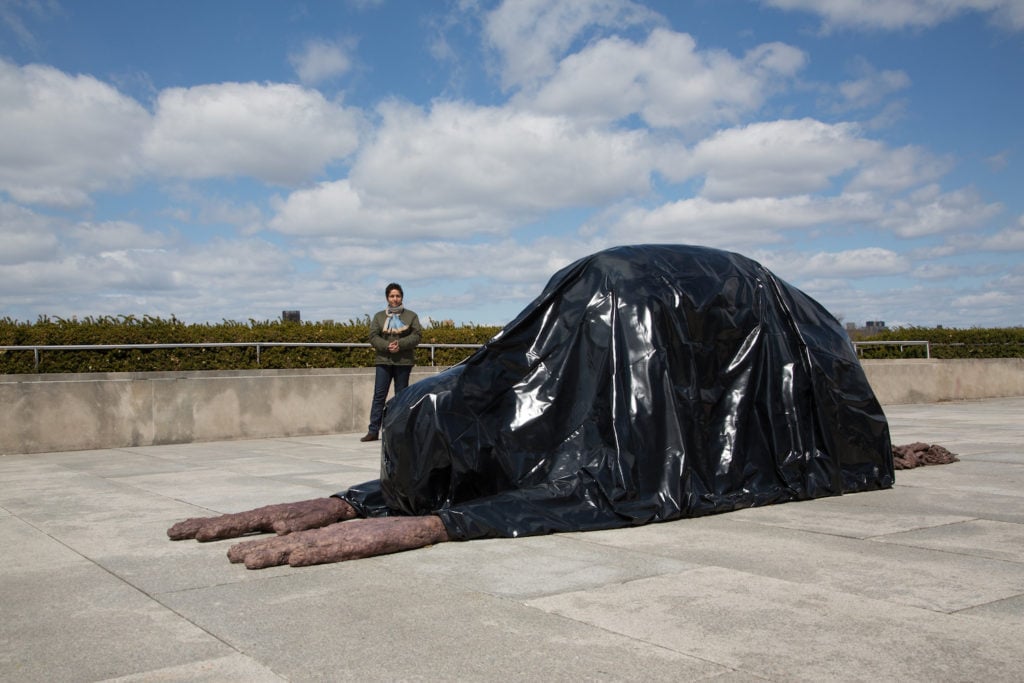
Huma Bhabha at the Met’s Roof Garden for the opening of “Huma Bhabha: We Come in Peace.” Photo by Eileen Travell.
Heavily gouged in places, the textured surface and countenance of We Come in Peace, recalls the millennia of wear-and-tear common among antiquities, inviting comparisons to objects in the museum’s collection. Could this be a monument from some far off future, transported through time via an as-of-yet unknown alien civilization?
“If they wish, viewers can make up their own story,” said Bhabha. “My objective is to give life, personality, and power to the sculptures, so they become something or someone.”
See more photos of the exhibition below.
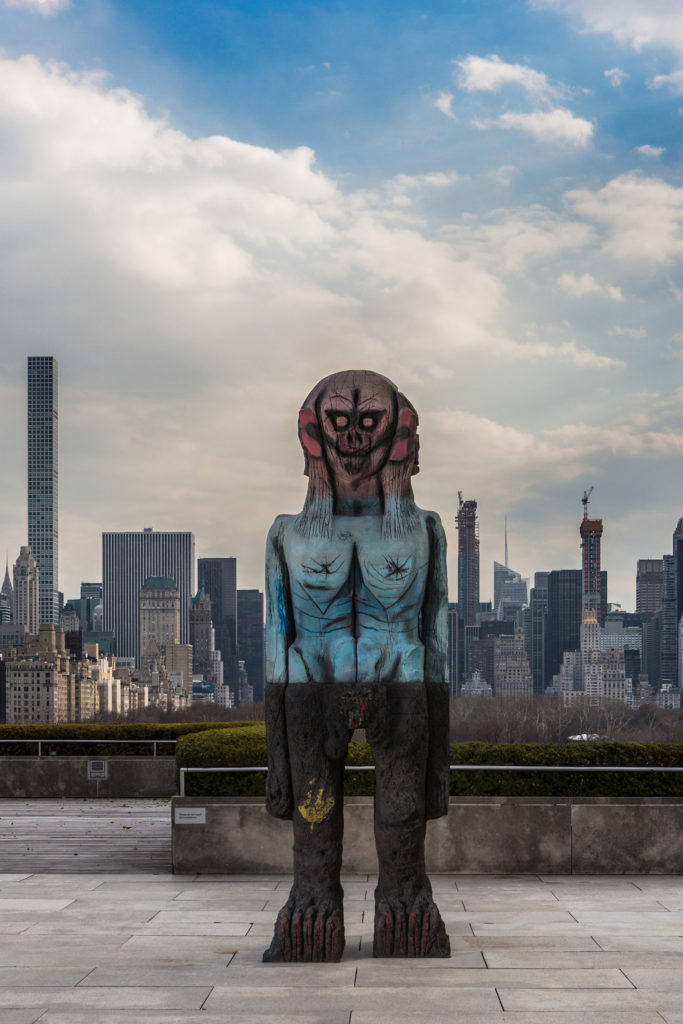
Huma Bhabha, installation view of the Met’s Roof Garden commission “Huma Bhabha: We Come in Peace,” We Come in Peace. ©Huma Bhabha, courtesy of the artist and Salon 94. Photo by Hyla Skopitz, courtesy of the Metropolitan Museum of Art.
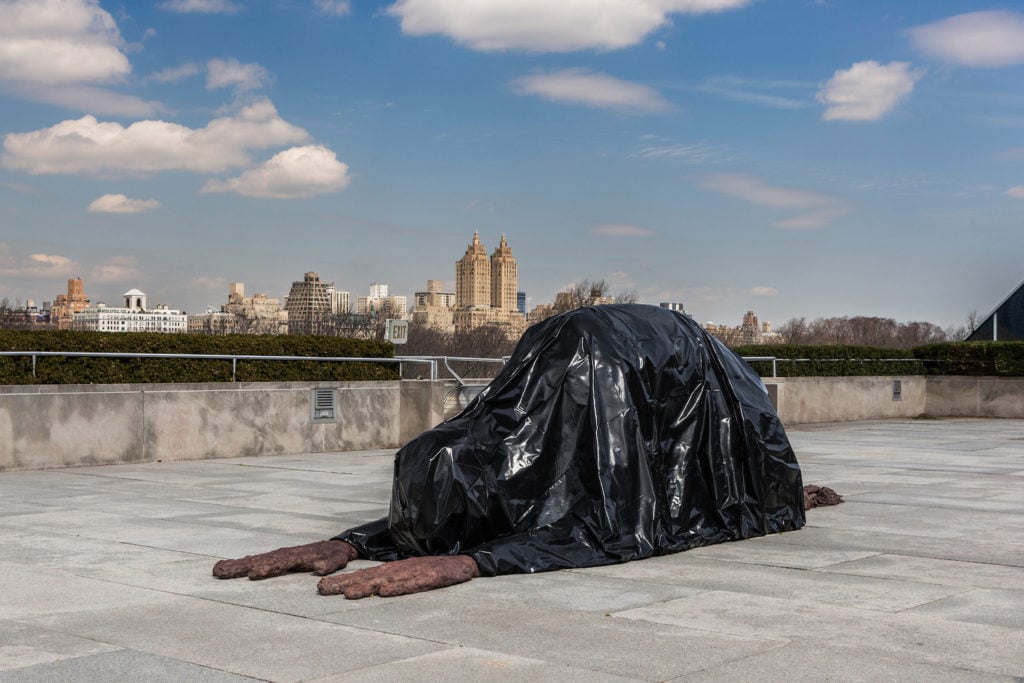
Huma Bhabha, installation view of the Met’s Roof Garden commission “Huma Bhabha: We Come in Peace,” Benaam. ©Huma Bhabha, courtesy of the artist and Salon 94. Photo by Hyla Skopitz, courtesy of the Metropolitan Museum.
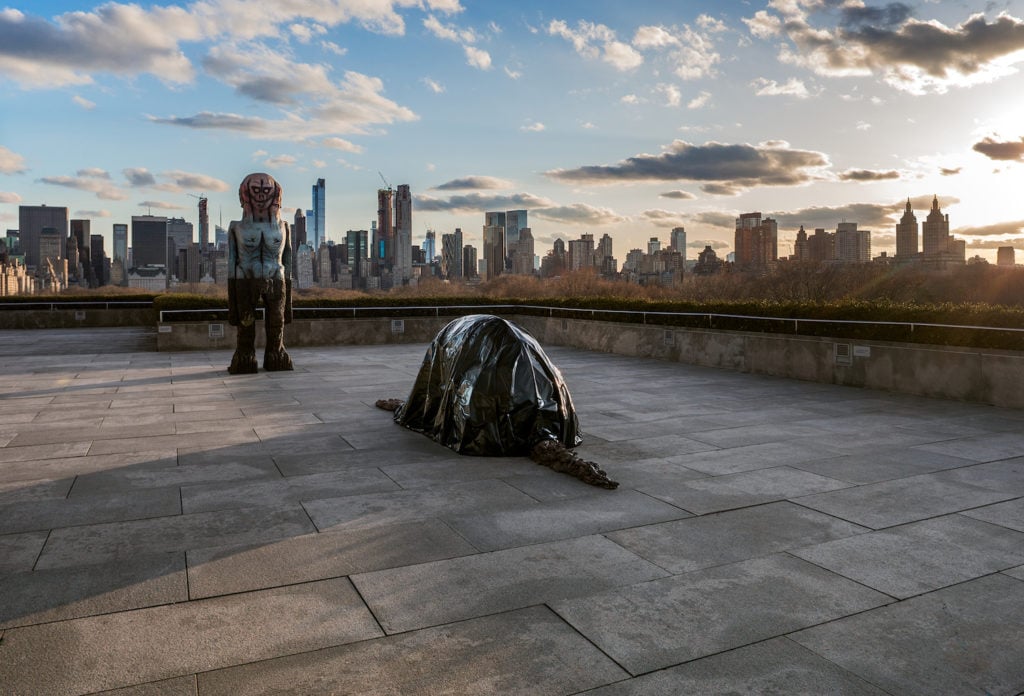
Huma Bhabha, installation view of the Met’s Roof Garden commission “Huma Bhabha: We Come in Peace.” ©Huma Bhabha, courtesy of the artist and Salon 94. Photo by Hyla Skopitz, courtesy of the Metropolitan Museum.
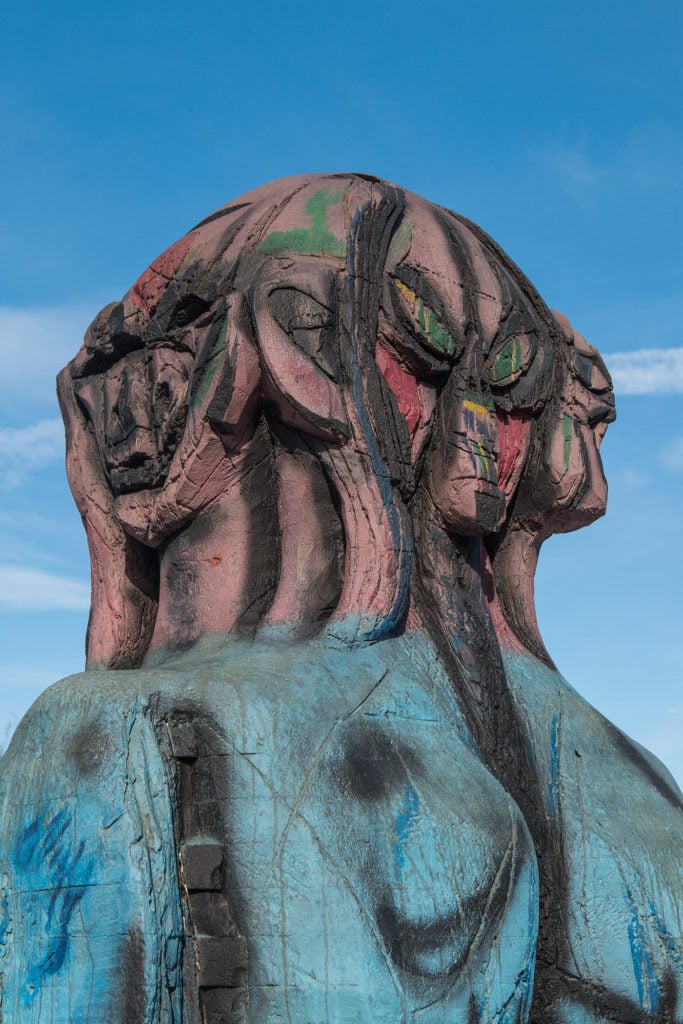
Huma Bhabha, installation view of the Met’s Roof Garden commission “Huma Bhabha: We Come in Peace.” ©Huma Bhabha, courtesy of the artist and Salon 94. Photo by Hyla Skopitz, courtesy of the Metropolitan Museum.
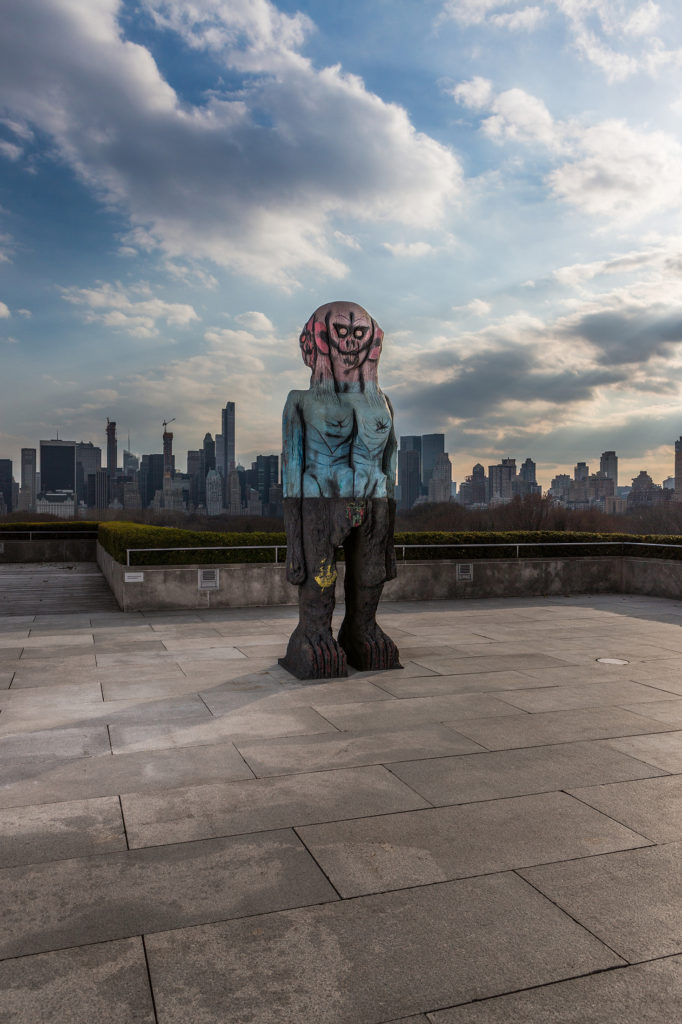
Huma Bhabha, installation view of the Met’s Roof Garden commission “Huma Bhabha: We Come in Peace,” We Come in Peace. ©Huma Bhabha, courtesy of the artist and Salon 94. Photo by Hyla Skopitz, courtesy of the Metropolitan Museum.
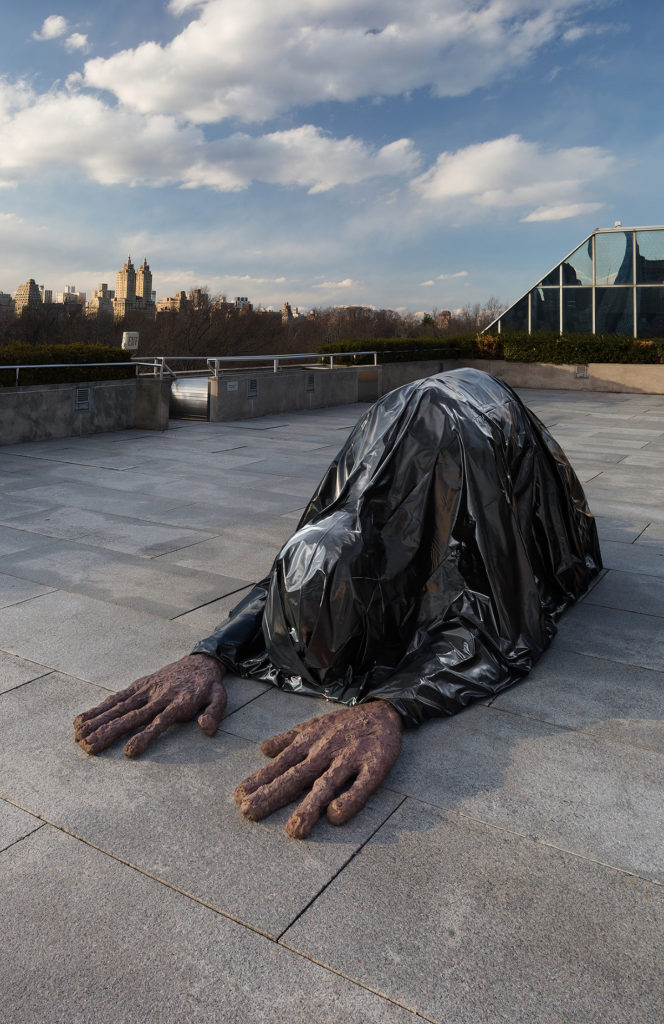
Huma Bhabha, installation view of the Met’s Roof Garden commission “Huma Bhabha: We Come in Peace,” Benaam. ©Huma Bhabha, courtesy of the artist and Salon 94. Photo by Hyla Skopitz, courtesy of the Metropolitan Museum.
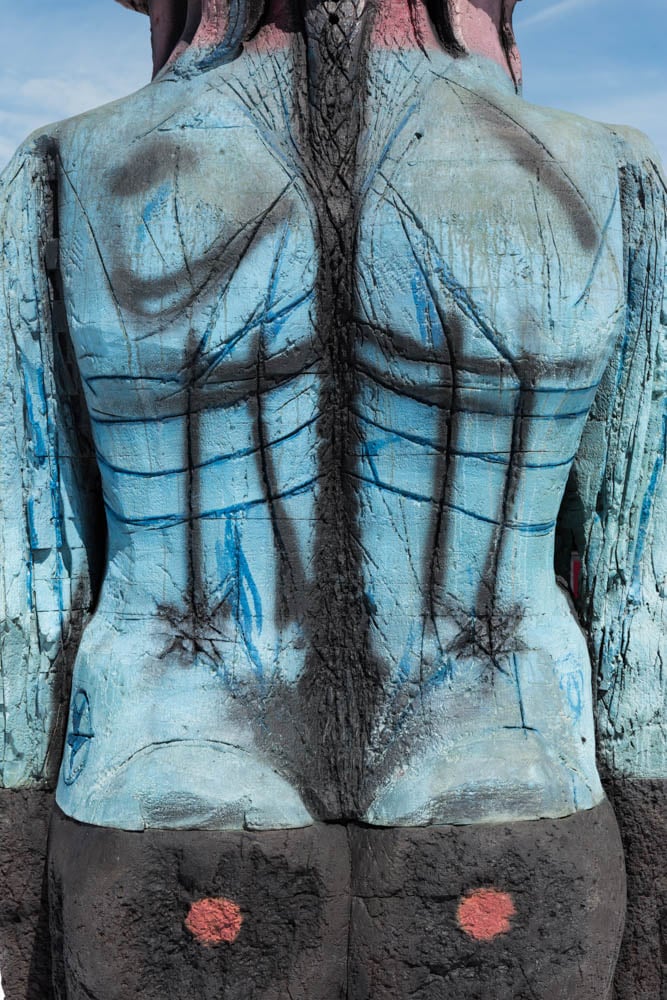
Huma Bhabha, installation view of the Met’s Roof Garden commission “Huma Bhabha: We Come in Peace,” We Come in Peace (detail). ©Huma Bhabha, courtesy of the artist and Salon 94. Photo by Hyla Skopitz, courtesy of the Metropolitan Museum.
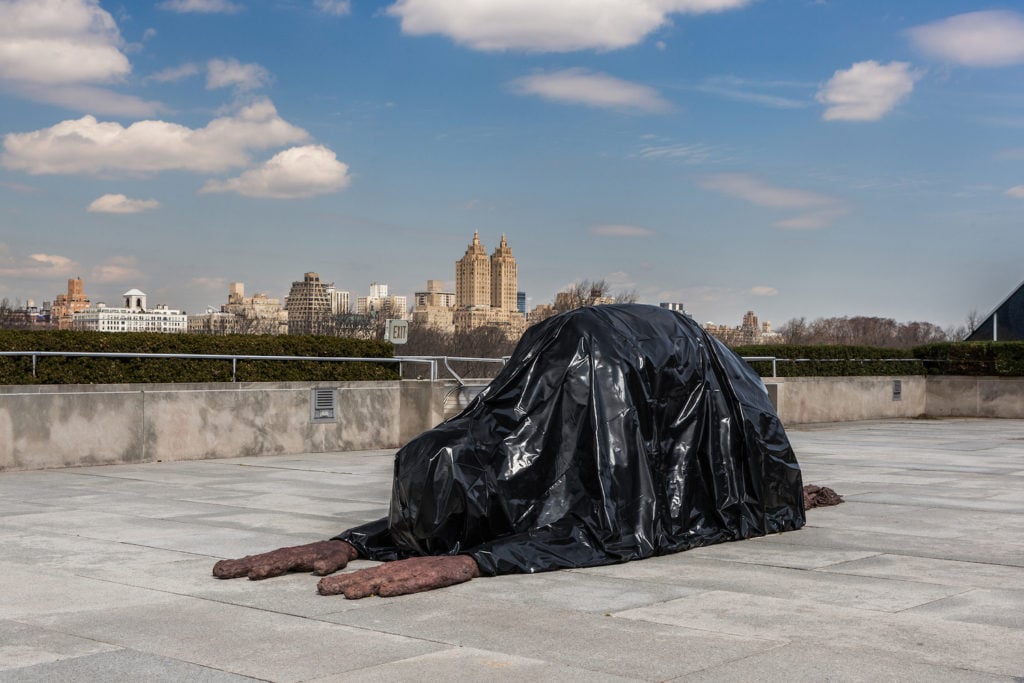
Huma Bhabha, installation view of the Met’s Roof Gardencommission “Huma Bhabha: We Come in Peace,” Benaam. ©Huma Bhabha, courtesy of the artist and Salon 94. Photo by Hyla Skopitz, courtesy of the Metropolitan Museumt.
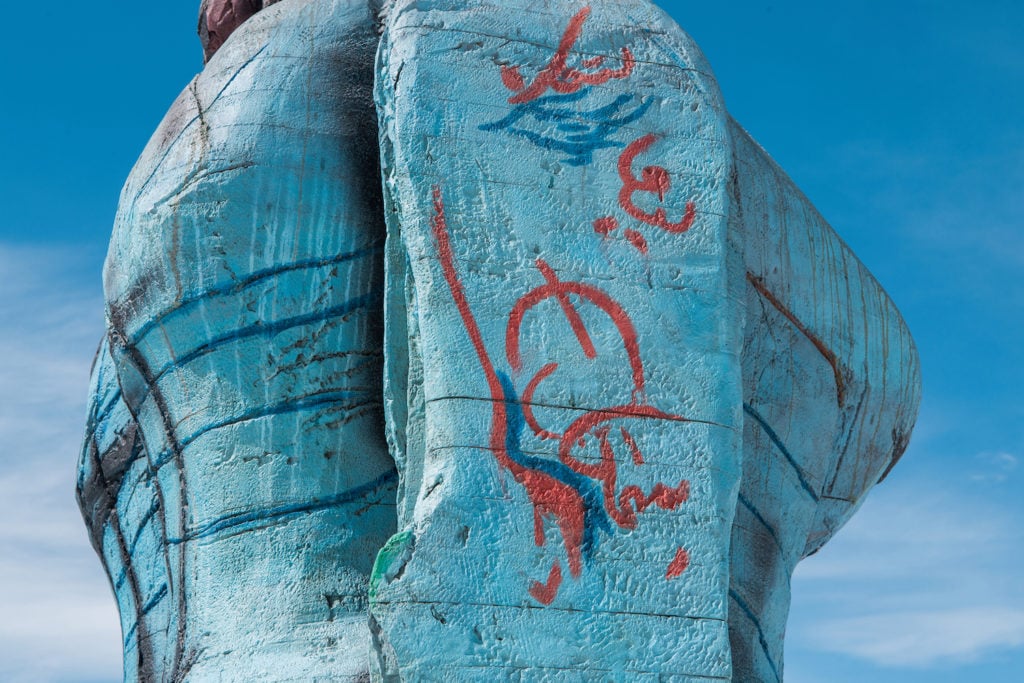
Huma Bhabha, installation view of the Met’s Roof Garden commission “Huma Bhabha: We Come in Peace,” We Come in Peace (detail). ©Huma Bhabha, courtesy of the artist and Salon 94. Photo by Hyla Skopitz, courtesy of the Metropolitan Museum.
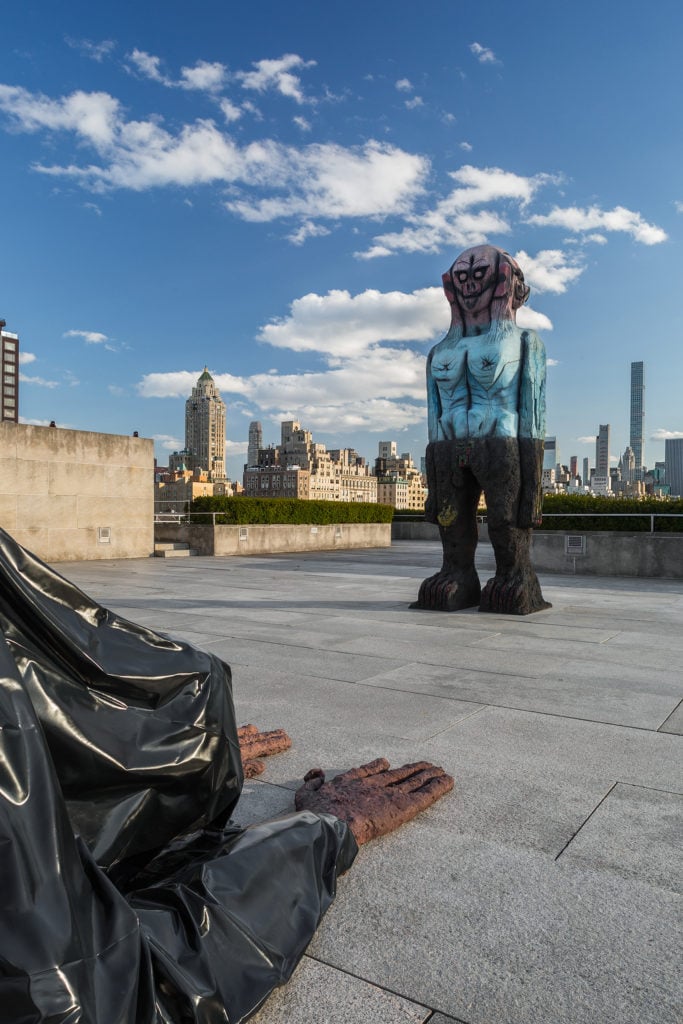
Huma Bhabha, installation view of the Met’s Roof Garden commission “Huma Bhabha: We Come in Peace.” ©Huma Bhabha, courtesy of the artist and Salon 94. Photo by Hyla Skopitz, courtesy of the Metropolitan Museum.
“Huma Bhabha: We Come in Peace” is on view at the Metropolitan Museum of Art, 1000 Fifth Avenue, Iris and B. Gerald Cantor Roof Garden, Gallery 926, April 17–October 28, 2018.
“Huma Bhabha: With a Trace” is on view at Salon 94, 12 East 94th Street, April 22–June 1, 2018.